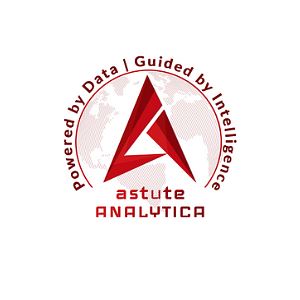
Air Quality Monitoring Market Set for Explosive Growth, Fueled by Tech & Regulation
Stringent regulations, AI-powered sensors, and rising public awareness are driving a surge in the air quality monitoring market. A deep dive into the industry’s future.
Air Quality Monitoring Market Set for Explosive Growth, Fueled by Tech & Regulation
The global air quality monitoring market is poised for significant expansion, driven by a confluence of factors including increasingly stringent regulations, rapid technological advancements, and a growing public awareness of the health impacts of air pollution. A recent analysis of the market reveals a projected period of robust growth, with innovations in sensor technology, data analytics, and connectivity playing a pivotal role.
Market Dynamics & Growth Drivers
Analysts predict a substantial increase in demand for air quality monitoring solutions over the coming years, estimating a market value reaching multi-billion dollar levels. This growth is fueled by governmental regulations aimed at mitigating air pollution. In the United States, recent revisions to the National Ambient Air Quality Standards (NAAQS) necessitate more frequent and comprehensive monitoring, while the European Union’s Air Quality Directive mandates regular data collection and reporting across member states. Similar initiatives are gaining momentum in rapidly industrializing nations in Asia-Pacific.
“The regulatory landscape is undoubtedly a major driver,” explains an industry expert. “Governments are recognizing the severe health and economic consequences of poor air quality and are implementing stricter standards. This creates a direct demand for sophisticated monitoring systems.”
Tech Innovations Transforming the Industry
The evolution of air quality monitoring is being spearheaded by several key technological advancements. The integration of the Internet of Things (IoT) is enabling the deployment of dense networks of sensors capable of real-time data collection and transmission. These sensors, often wireless and battery-powered, can be deployed in diverse environments, from industrial facilities to urban streetscapes.
“IoT is a game-changer,” says a leading engineer developing air quality sensors. “It allows us to move beyond static monitoring stations and create a dynamic, hyperlocal view of air pollution.”
Furthermore, artificial intelligence (AI) and machine learning (ML) are revolutionizing data analysis. AI-powered algorithms can identify patterns, predict pollution hotspots, and optimize mitigation strategies. This is crucial in understanding complex pollution dynamics and implementing effective interventions.
“AI is helping us make sense of the massive amounts of data generated by these monitoring networks,” explains a data scientist specializing in air quality analysis. “We can now identify pollution sources, track plume movement, and forecast air quality events with greater accuracy.”
The development of more accurate and affordable sensors is also contributing to market growth. Advanced materials and miniaturization techniques are enabling the creation of sensors capable of detecting a wider range of pollutants at lower concentrations. This is expanding the accessibility of air quality monitoring to smaller communities and individual users.
Key Players and Competitive Landscape
The air quality monitoring market is characterized by a mix of established players and emerging startups. Major companies like Honeywell, Siemens, and Teledyne Technologies hold significant market share, offering a comprehensive portfolio of monitoring systems and services. These companies are investing heavily in research and development to maintain their competitive edge.
However, a wave of innovative startups is challenging the established players. Companies like Aclima and Climos are developing hyperlocal monitoring solutions and leveraging data analytics to provide actionable insights. These startups are often focused on niche markets and are able to respond quickly to changing customer needs.
Competition is intensifying, with companies vying for market share through product innovation, strategic partnerships, and acquisitions. The market is expected to consolidate over time, with larger players acquiring smaller companies to expand their product offerings and geographic reach.
Regional Trends and Challenges
While the global air quality monitoring market is growing rapidly, regional trends and challenges vary. North America and Europe are leading the way in terms of technology adoption and regulatory compliance. Stringent regulations and high levels of environmental awareness are driving demand for advanced monitoring solutions. In Asia-Pacific, rapid industrialization and urbanization are creating significant air pollution challenges. Demand for air quality monitoring is growing rapidly, but affordability and infrastructure limitations remain key obstacles.
“The challenges in Asia-Pacific are different than those in North America or Europe,” explains an environmental consultant. “Cost is a major factor, and there’s a need for more robust infrastructure to support monitoring networks.”
Developing countries often lack the resources and expertise to implement comprehensive air quality monitoring programs. International collaborations and technology transfer initiatives are crucial to addressing these challenges.
The Future of Air Quality Monitoring
The future of air quality monitoring is likely to be characterized by several key trends. Real-time monitoring networks will become more ubiquitous, providing a dynamic and granular view of air pollution. The integration of AI and ML will enable predictive modeling and proactive interventions. Sensor technology will continue to advance, providing more accurate and affordable measurements. Data analytics will play an increasingly important role in informing policy decisions and public health initiatives.
The convergence of these technologies will create a more connected and informed approach to air quality management. This will not only improve public health but also contribute to a more sustainable and resilient future. Furthermore, the democratization of air quality data, through open-source platforms and citizen science initiatives, will empower communities to take action and advocate for cleaner air.
“We’re moving towards a future where everyone has access to real-time air quality information,” explains a technology enthusiast. “This will empower individuals to make informed decisions and advocate for cleaner air in their communities.”
The market is projected to continue growing rapidly, driven by the increasing demand for clean air and the relentless pursuit of technological innovation. The companies that can adapt to changing market conditions and deliver innovative solutions will be well-positioned to succeed in this dynamic and rapidly evolving industry.
